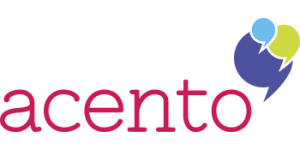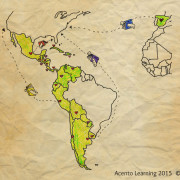The Most Important Resource is… You
There is no more powerful testament to language inequity than “Spanish resources are really scarce!” We hear it all the time and it’s true, all the time. However, as time passes and dual language education continues growing in America, the market for Spanish resources also grows. The days of “scarce Spanish resources” are numbered because this industry is definitely growing. Therefore, in this blog post we won’t publicize Spanish resources, but rather invite you to invest in the most important resource of all: yourself.
A growing body of research suggests that teacher quality is the most important factor influencing student achievement. In a dual language program, this factor takes on an even greater deal of importance because students are doing double the work: learning content and a second language. Simultaneously.
Throughout the years, we’ve been able to determine which are the “superpowers” that dramatically elevate the quality of in-Spanish teachers. We invite you to take in this list with a pensive and self-evaluative mindset.
In-Spanish Teachers’ Superpowers
Master Mime – “I don’t speak Spanish, but I understood it all!” is a recurring comment from external folks visiting our dual language schools who step into the classroom of a master mime in-Spanish teacher. These experts of sheltered-instruction communicate through gestures and movements. They constantly model with great intentionality and perhaps even with dramatic flare what they want their students to do or learn. This is a crucial skill for any second language teacher. In the fabulous documentary Speaking in Tongues, we see Miss Chow exerting this superpower with her Kindergarten class.
Economy of Language – When we are learning a new language, it is extremely difficult to follow along when the speaker is blazing through an unnecessary abundance of words. When we say “economy of language” we refer to the skill of mindfully using precise, specific and succinct words, while appropriately enunciating them. In-Spanish teachers are Spanish language models ALWAYS. Let’s make sure that our dialogues with kids are powerful moments, reducing unnecessary teacher talking time and increasing learner participation.
A Literary Eye – Given the Common Core times we live in and the importance of Close Reading, it is a must to cultivate a deep understanding and a comprehensive mental lexicon of existing Spanish texts that can connect with our learning objectives. Browsing through Spanish books in your local or school library, soliciting catalogs from publishing companies and attending conference events like NABE or La Cosecha are key moves to keep ourselves at the vanguard of what quality materials the Spanish publishing market has to offer.
Visual Power – Of course we aren’t all born with the ability to beautifully draw in order to create visual anchors for our lessons, but we can certainly develop this skill! A great way to begin is by using circles and ovals to create figures – and in the meantime, just go for it and do your best. Your students will thank you because even if the drawing is “bad,” it still helps them. You can also use other resources like magazine clippings, the Internet or real objects to find visuals that make content more visible. ANY visual support is better than no visuals at all.
Pattern Power – A song’s chorus, a book’s pattern – the predictability of all repetitions are captivating hooks for any child, especially during the early years. When a child is learning a second language, patterns are essential to create a safe and comfortable environment with repeated opportunities to make language comprehensible. The classrooms of highly skilled in-Spanish teachers are spaces where routines are sacred and children always know what will happen next. It is in the context of these routines where children test the waters with new vocabulary and take risks in using their Spanish.
Storytelling Power – There is nothing more charming than to be drawn in by the skills of a great storyteller. In the Spanish classroom, stories really come to life when teachers use an extensive range of intonations, pauses, gestures, movements, and artifacts (realia) that contextualize the plot. This is the space where teachers can incorporate rich and new vocabulary. However, it is important to keep narrations short and to have a good mix of actions and dialogues. Also, there is no better cure for kids’ boredom and disinterest than a good show! Ana Lomba has done good research in this matter and offers lots of resources to elevate the quality of teacher-storytellers.
Game and Music Power – Highly-skilled in-Spanish teachers have a repertoire of traditional games and songs that embody Hispanic cultures while attracting, teaching and entertaining children. Among other reasons, games and songs are powerful vehicles in dual language classrooms because children have an innate attachment to them and they alleviate the stress associated with learning a second language.
Laugh When it Gets Tough – To teach in-Spanish is very, very difficult. Accomplished in-Spanish teachers are highly flexible and see themselves as pioneers of the dual language movement. They understand that resources are scarce and see opportunities in this lack of wealth. These teachers are resourceful in overcoming obstacles: they will translate a book on their own just to be able to use it, they create their own resources and they laugh while they learn to “make it work.” Successful in-Spanish teachers understand that language learning and teaching is full of stumbles and they find humor in tough situations.
Be a Beacon of Happiness – In general, successful teachers are people who have fulfilling and meaningful lives outside of school that keeps them balanced. Since we are already doing one of the toughest jobs in education, let’s bring our happiness to our classrooms and be a beacon of this positive light for our students. When we are satisfied with our lives, it is easier to deal with obstacles at school because we understand that these challenges do not define us as people and this happiness propels us forward to keep going.
We hope that this entry becomes a practical tool for you to determine where you are at in collecting, using and refining your superpowers. In identifying an area of need, focus and be patient. Invite other colleagues to collaborate; solicit their help and support one another in developing or refining these skills. The simple fact that you have taken the time to read this entry with hopes to always be better and invest in yourself is the first step. Keep going, we are here to help.
Con cariño,






Leave a Reply
Want to join the discussion?Feel free to contribute!